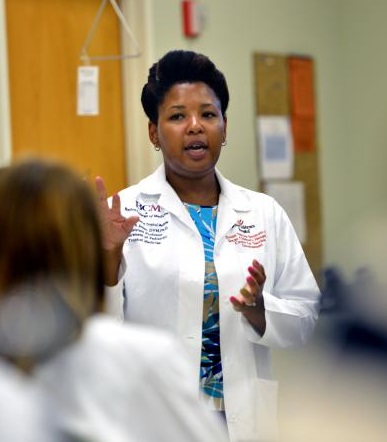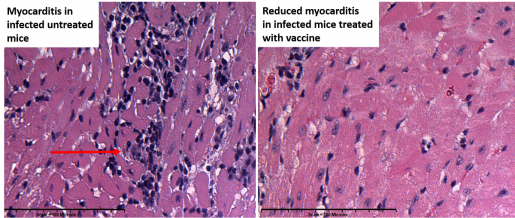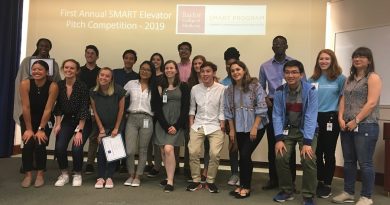Black History Month Spotlight: Interview with Dr. Kathryn Jones
From the Labs met with Dr. Kathryn Jones, associate professor of pediatrics-tropical medicine and molecular virology and microbiology at Baylor College of Medicine. A veterinarian at heart from her early years, Jones shared how she discovered her vocation for scientific research, why she finds animal diseases so fascinating and how she likes to unwind at the end of the day.

How did your professional journey start?
From the time I was a child growing up in Detroit, Mich., I loved animals and decided that I wanted to spend my life helping them. I wanted to become a veterinarian, and through middle school and high school I knew that I had to study hard so I could get into vet school.
When I attended Michigan State University for my undergraduate studies, I was introduced to research. As part of my pre-vet training, I participated in a mentorship program that paired students with a vet who was on campus most of the time. I was paired with a vet who had his own research lab, an immunogenetics lab. This was something completely new to me. Although I knew about research, until then I had not known a vet who conducted research. That experience sparked my interest.
My interest in pursuing research as a career grew during my training in veterinary school. I worked with other vets with research labs learning mainly about parasites, which are a major issue for agricultural, companion and exotic animals, and started conducting my own projects. The experience made me realize that I truly enjoyed research and that, although I liked working in the clinical setting, I found it was more exciting to work in the lab. I decided then to pursue a Ph.D. after vet school.
People thought I was crazy. “You already spent four years in vet school. Do you want to spend another five or six years in graduate school?” I said, “Well, I’d rather do it now because I want to keep learning, and I really enjoy it.”
I completed my doctorate degree in microbiology and molecular genetics at Michigan State. I learned a lot about parasites themselves, but also how they affected not only animal health but human health in many different ways. I was fascinated by this “one health” concept, that animal and human health are connected. My current research aims to help both animals and humans.
What is the current focus of your research?
I am in the Center for Vaccine Development at Texas Children’s Hospital, where we focus collectively on developing vaccines against neglected tropical diseases. Most of our vaccines are for parasites and some viral diseases as well.
I focus on Chagas disease, also called American trypanosomiasis. The disease is caused by a protozoal parasite called Trypanosoma cruzi, which is transmitted by certain insects, such as blood sucking “kissing bugs.” Chagas disease can be found in the southern U.S., throughout Mexico and in Central and South America.
Chagas not only causes heart disease and other problems in people but it also can affect more than 100 animal species, including dogs and cats, making it also a problem for veterinary medicine.
In our lab we focus on vaccine development and also on understanding the mechanisms of disease to try to develop better treatments to prevent heart conditions once people get infected.
For instance, we recently published a paper describing TGF‐β, connective tissue growth factor and platelet‐derived growth factor‐D, which are induced by chronic infection with Trypanosoma cruzi, as potentially useful biomarkers of cardiac fibrosis. These profibrotic biomarkers have the potential to enhance the characterization and assessment of cardiomyopathy development in chronic chagasic cardiomyopathy, in addition to traditional cardiac biomarkers, such as troponin and natriuretic peptides.

How can researchers and institutions further interest in science?
When I think back to career days we had at school, I recall physicians, nurses, business professionals and policemen telling us about their careers, but we never had a person who worked on basic scientific research for a living.
I think universities and researchers could work together to bring scientists to schools. Scientists can introduce children to the work they do and answer questions such as, “What’s the pathway I need to take to become a scientist? How do I get into graduate school? Where can I work as a scientist?”
Tell us something few people know about you
I like to cook and ask my co-workers to be my guinea pigs by trying new recipes I am experimenting with. I’ve tried different breads, cookies and cakes, but recently I am getting into Asian dumpling making. I find the process of folding the little edges on the dumpling over and over very soothing. And at the end I have something to eat!



